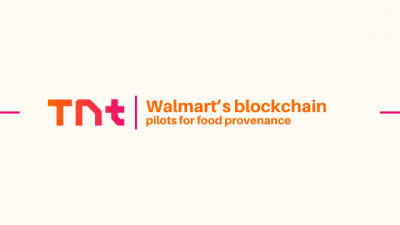As mobile technology has advanced, the design and functionality of app interfaces have evolved dramatically. Early mobile applications often mirrored their desktop counterparts, leading to cluttered and cumbersome interfaces ill-suited for smaller screens. However, as mobile devices became the primary means of digital interaction, the focus shifted towards user-centric design – emphasizing the need for interfaces that accommodate the limited real estate and touch-based navigation of smartphones.

The cornerstone of modern mobile app development is the simplicity of the user interface. A streamlined interface enhances usability by reducing cognitive load, making apps more intuitive and accessible to a broader audience. The less time users spend deciphering an app’s interface, the quicker they can achieve their goals, whether it’s booking a flight, shopping, or accessing information. This shift is not merely aesthetic but a fundamental rethinking of how apps engage users efficiently and effectively.
This article aims to delve into the principles of simplifying user interfaces within the realm of mobile app development, with a particular focus on insights from a seasoned iOS app development company. It will provide developers and designers with actionable strategies to refine their applications, ensuring that simplicity serves as the pathway to a superior user experience. Through a detailed exploration of these strategies, the article will demonstrate how simplification can lead to more engaging, productive, and enjoyable mobile applications.
Principles of Simplicity in User Interface Design
Adopting a minimalist approach in mobile app interfaces is more than an aesthetic choice; it is a functional strategy that reduces cognitive load and enhances user comprehension. Minimalism focuses on the essential elements of the app’s interface, eliminating unnecessary components that do not contribute to user goals. By streamlining design elements, minimalism helps users process information more quickly and efficiently, facilitating a smoother user experience. This approach not only prioritizes the content and functionality that matter most to users but also reduces distractions, making it easier for users to focus on their tasks.
Consistency is another critical principle in simplifying user interfaces. It involves maintaining uniformity across various aspects of the app, such as icons, typography, and color schemes. Consistent design elements create a cohesive user experience that enhances learnability and predictability. When users encounter familiar cues and patterns as they navigate through different parts of the app, their confidence increases, reducing the mental effort needed to interact with the app. This uniformity allows users to rely on their past experiences with the app, making navigation intuitive and interactions more efficient.
Clarity in user interface design ensures that users can navigate the app without confusion. Clear visual cues, such as distinct buttons and intuitive icons, are paramount. Effective use of space and visual hierarchy can guide users through their tasks with ease, making it clear what steps they need to take next. Calls to action should be prominent and straightforward, encouraging users to proceed without hesitation. By emphasizing clarity, designers ensure that users can achieve their desired outcomes without unnecessary trial and error, thereby enhancing the overall usability of the app.
Technological Tools and Frameworks Supporting Simplicity
In the realm of mobile app development, the right tools and frameworks are pivotal in crafting user interfaces that embody simplicity and efficiency. Designers and developers have access to a suite of advanced software that aids in creating intuitive and streamlined designs tailored to enhance user engagement and usability.
UI Design Tools: Tools such as Sketch, Adobe XD, and Figma stand at the forefront of UI design by facilitating the creation of clear and functional interfaces. These applications offer robust features for designing, prototyping, and collaborating on digital projects. Sketch is renowned for its vector-based interface design tools that allow for detailed and scalable graphics. Adobe XD provides an all-in-one solution for design, prototype, and sharing, making it invaluable for rapid iteration. Figma excels in collaborative design, enabling multiple team members to work on a design simultaneously in real-time, ensuring consistency and coherence in the design process.
Development Frameworks: When it comes to development, frameworks like Flutter and React Native play a crucial role in maintaining simplicity across multiple platforms. Flutter, developed by Google, allows designers and developers to build beautiful, natively compiled applications for mobile, web, and desktop from a single codebase, promoting interface consistency and speeding up the development process. React Native, introduced by Facebook, enables developers to build mobile apps using JavaScript and React, sharing code across iOS and Android platforms while still delivering a smooth and native-like user experience.
User Testing Software: To ensure the effectiveness of simple designs, user testing software like UsabilityHub and Lookback.io is essential. These tools help gather actionable feedback from real users, which is crucial for refining user interfaces. UsabilityHub offers tests like preference tests, five-second tests, and click tests, which provide insights into how users perceive an interface design. Lookback.io facilitates live moderated usability testing by capturing video, audio, and screen activity, allowing developers to observe user interactions in real-time and make informed decisions about design adjustments.
JetRuby Agency, having evolved from a startup into a full-scale software development firm, has leveraged these technological tools and frameworks extensively. Our journey in partnering with diverse businesses to prototype, engineer, and launch client-centric software solutions underscores the effectiveness of employing these advanced resources. By integrating these tools into our development process, we have been able to uphold the principles of simplicity and user-centric design, thereby delivering software solutions that meet and exceed client expectations. This commitment to simplicity and functionality reflects our dedication to excellence in the ever-evolving landscape of mobile app development.
Case Studies of Successful Simplified App Interfaces
In the landscape of mobile apps, simplicity in user interfaces has proven to be a significant driver of user engagement and satisfaction, as highlighted by an experienced Android app development agency. This is evident in both consumer and enterprise applications, where streamlined interfaces have not only improved usability but also operational efficiency.
Consumer Apps: A prime example of a consumer app that has successfully employed a simplified interface is Airbnb. The platform’s design is intuitively structured, making it easy for users to navigate through listings, manage bookings, and communicate with hosts. The search function is particularly noteworthy, with filters that are easy to apply and modify, enhancing the user’s ability to find suitable accommodations quickly. Airbnb’s focus on high-quality images and minimal text simplifies the decision-making process, thereby increasing user satisfaction and engagement.
Enterprise Apps: In the B2B sector, Slack has made significant strides in interface simplification, transforming how teams communicate. By reducing complexities and focusing on an intuitive navigation system, Slack has facilitated smoother interactions within workplaces. Its straightforward design integrates seamlessly with multiple productivity tools, allowing users to manage communications, share files, and track project progress in a centralized location. This simplification has led to measurable improvements in operational efficiency, reducing the time teams spend managing communications.
Impact Analysis: The simplification of app interfaces like those of Airbnb and Slack has tangible impacts on their respective domains. For Airbnb, the clear, focused interface has contributed to an increase in bookings and a higher rate of return users, indicative of enhanced user satisfaction. Slack’s simplified approach has been shown to decrease the learning curve for new users, thereby accelerating adoption rates and improving communication efficiency across teams. These examples highlight that a well-executed simplification strategy not only elevates the user experience but also drives better business outcomes, making it a critical consideration in app development.
A Pathway to Future Usability
In this exploration of mobile app development, we have highlighted the indispensable role of simplicity in designing user interfaces. From the minimalist approach that reduces cognitive load to the consistency that fosters intuitive navigation, simplicity is foundational to enhancing user experience. We examined various technological tools and frameworks, such as Sketch, Adobe XD, Flutter, and React Native, that support the creation of streamlined designs. Case studies of successful applications like Airbnb and Slack demonstrated that simplifying the user interface leads to increased user engagement and operational efficiency.
Looking ahead, the future of UI design in mobile app development is likely to continue emphasizing minimalism. This trend is driven by the growing need for apps to be accessible across a wide range of devices and user demographics. As digital technology becomes increasingly integrated into everyday life, the demand for interfaces that are easily navigable by all users, regardless of technical skill, will rise. This evolution will necessitate innovations in design methodologies and tools that further simplify the development process and enhance the end-user experience.
For developers and designers, the call to action is clear: prioritize simplicity in your app designs. By doing so, you not only enhance the usability of your apps but also ensure that they are accessible to a broader audience. This approach is not merely about aesthetic cleanliness but about removing barriers to functionality and enjoyment, making technology more inclusive. As we move forward, let us commit to creating applications that everyone can navigate with ease and confidence, thereby setting new standards in user interface design. Embrace simplicity, and let it guide you toward crafting more effective and universally appreciated mobile applications.
Media Contact:
Information contained on this page is provided by an independent third-party content provider. Binary News Network and this Site make no warranties or representations in connection therewith. If you are affiliated with this page and would like it removed please contact [email protected]



Comments